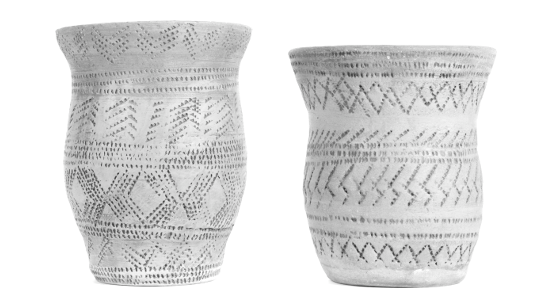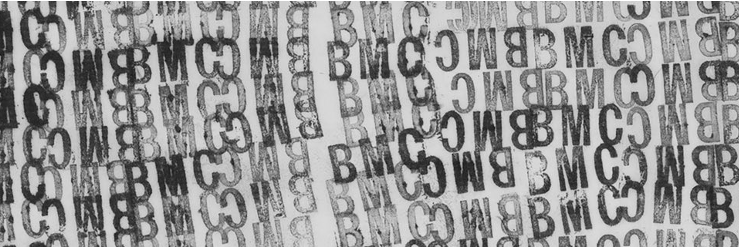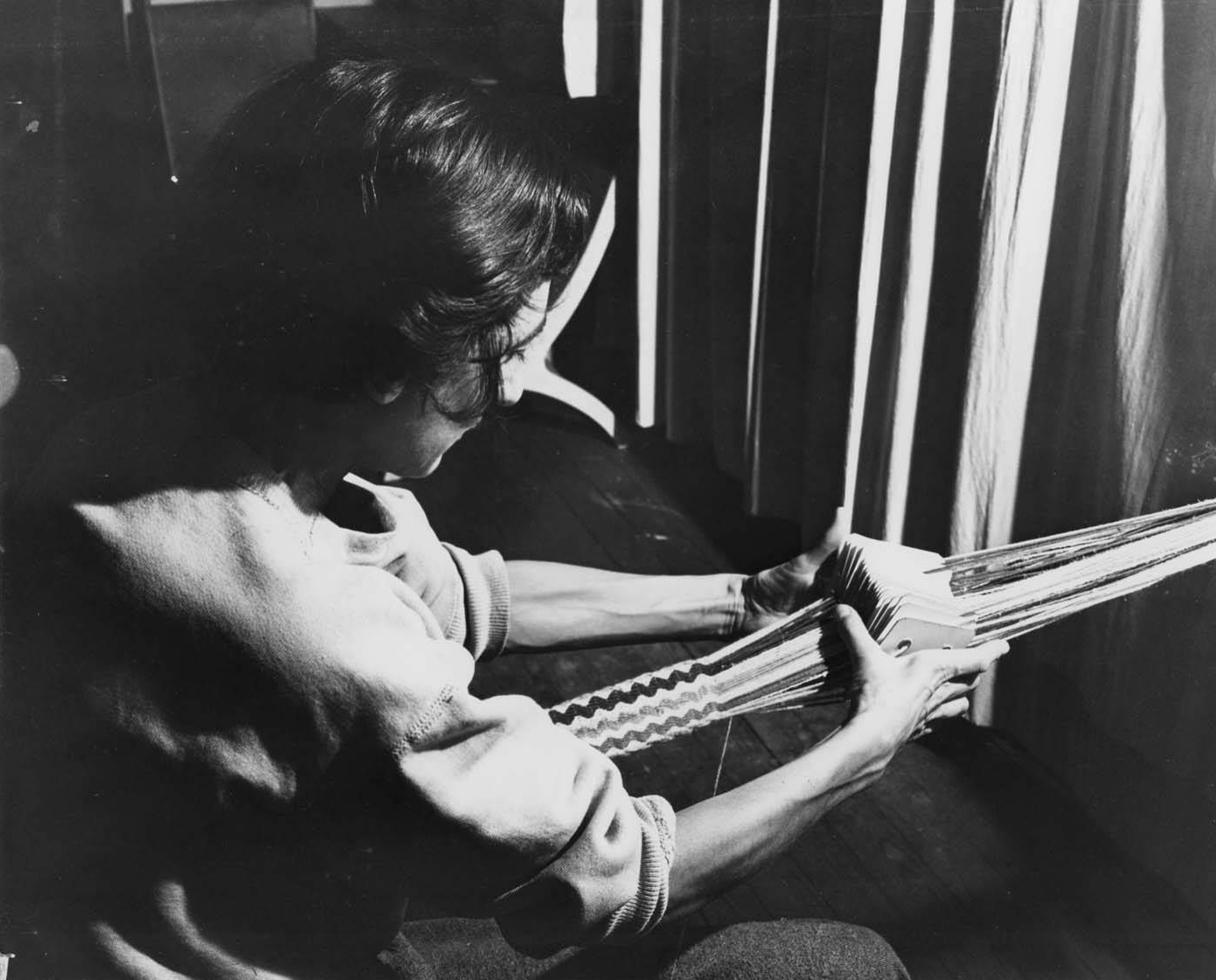Dehn’s 1939 study “On Ornamentation" pursues a quasi-axiomatic presentation beginning with rudimentary motifs before synthesizing more complex types, like the meander. His first example is a decoration from the Stone Age: a row of equally spaced marks set horizontally around an earthenware vessel, perhaps like these ancient pots [↓] in the Bowes Museum. He observes that the execution of even such a humble pattern demanded that the artist coordinate three different instances of order: the equivalence of each mark to the next mark; the equivalence of each space between a pair of marks and the space between the next pair; and the proper choice of separation so as to evenly divide the vessel's circumference. “The solution,” Dehn observes, “affords satisfaction as the solution of a reckoning assignment.”

By stacking rows so each mark is positioned between two neighboring points of the previous row the sense of a “rule” or “higher rhythm” emerges. Inevitably the artist is drawn to connect the dots, thereby dividing the surface into a lattice or “two-dimensional rhythm” that Dehn celebrated as a momentous event in the history of mathematics: “this new thing, the unintended, is already to be denoted as a Theorem…one of the first mathematical theorems ever encountered by a human.”

Ruth Asawa explored similar rhythms by similarly humble means in her Black Mountain College laundry stamp work [↑]. For Dehn, there was a natural progressions from such elementary forms of repetition to more complex patterns of checkerboards, meanders, spirals, and the ideas studied by mathematicians. At the end of his long essay he concludes:
among all these forms, only a few principles must be acknowledged, basic tendencies of the human spirit which are inextricably bound up with music, architecture, and every artistic expression. These principles are mathematical in nature and mathematical propositions are discernible in many ornaments. Thus we are able through our observations to find a connection between the beautiful works of those who create sensuous forms and the manifold shapes with which the mathematician works in the abstract.Anni Albers [↓] anticipated Dehn's linking art and science through craft in her 1937 essay "Work with Material": "All art work, such as music, architecture, and even religion and the laws of science, can be understood as the transformed wish for stability and order." Unlike Dehn's more theoretical perspective, Albers is quick to follow general assertions like this with what she views as their practical implications, especially for the art student and teacher. She continues,
But art work understood as work with a substance which can be grasped and formed is more suited for the development of the taste for exploration than work in other fields, for the fact of the inherent laws of material is of importance. They introduce boundaries for a task of free imagination.

In class we will explore some of the laws inherent to weaving...
February 12, 2025
Rhythm
Readings:
Rhythm
Readings:
Work with Material (Anni Albers)
On Ornamentation (Max Dehn)
Resources:
One Aspect of Art Work (Anni Albers)